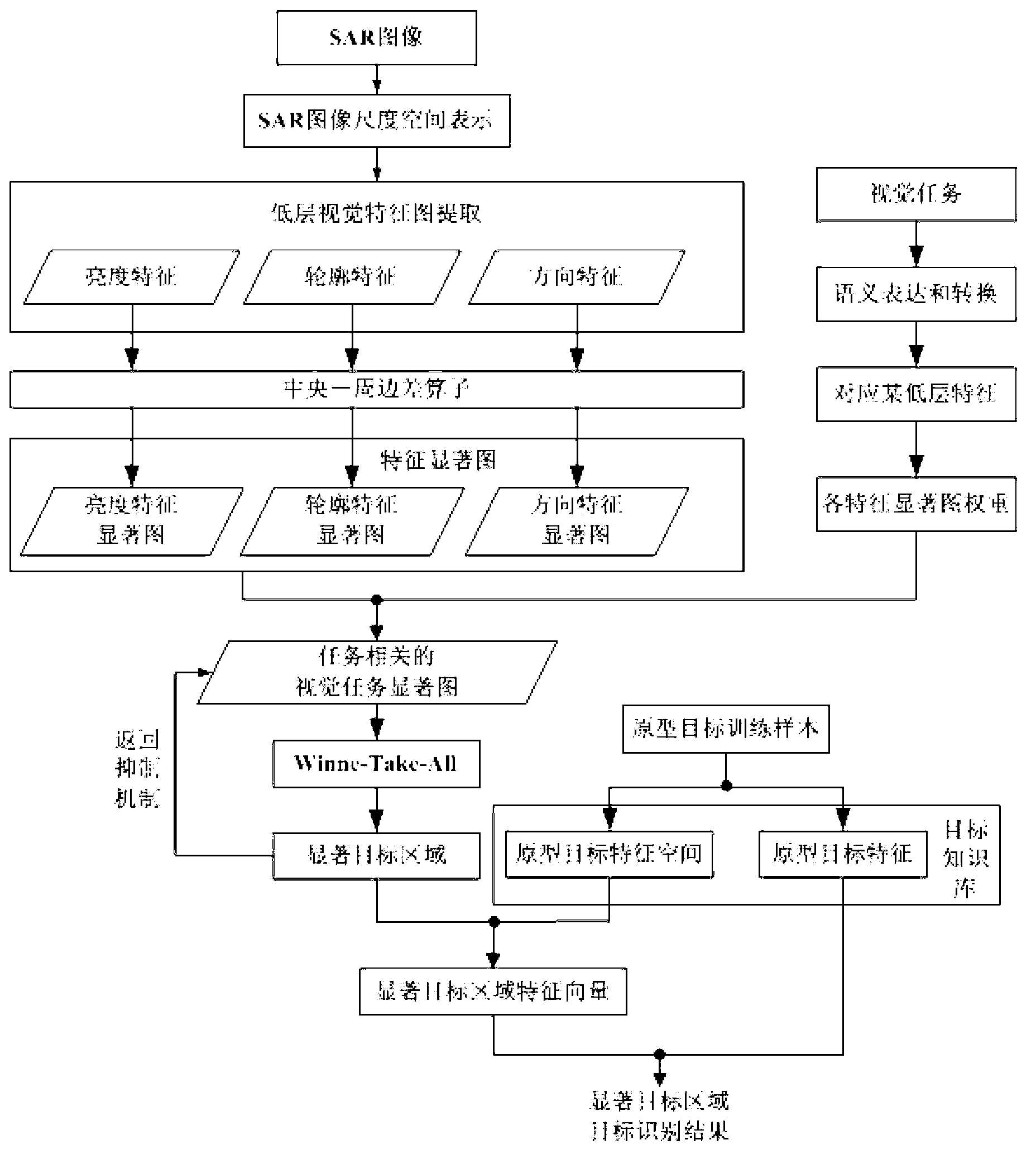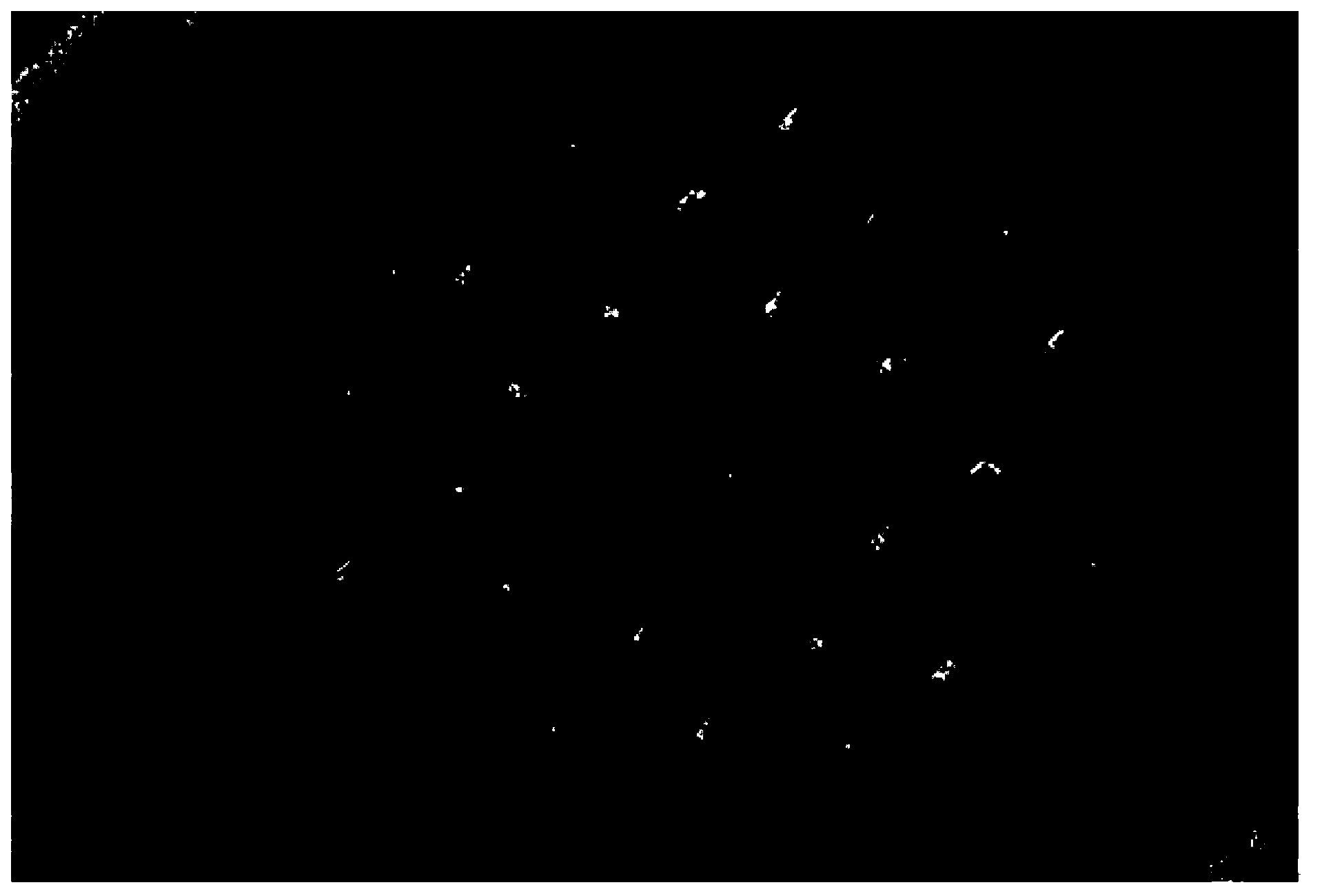Method for recognizing collaborative target in SAR (Synthetic Aperture Radar) image based on visual attention mechanism
A visual attention mechanism and target recognition technology, applied in the field of SAR image collaborative target recognition based on visual attention mechanism, can solve the problems of not considering the guiding role of visual tasks, low level of algorithm intelligent processing, and unsatisfactory detection results.
- Summary
- Abstract
- Description
- Claims
- Application Information
AI Technical Summary
Problems solved by technology
Method used
Image
Examples
Embodiment
[0083] The realization process of the present invention is illustrated by a specific example.
[0084] Select a SAR image containing several targets to be identified as the input image, such as image 3 As shown, the size is 1024×1024 pixels, and the vision task is to search for tank targets in SAR images.
[0085] According to step 1, a four-level scale space representation of the SAR image is established, and the brightness visual feature map I of the SAR image is obtained by calculating the "central-peripheral difference" between the high-resolution scale image and the low-resolution scale image SAR (1,3) and I SAR (2,4), contour visual feature map E SAR (1,3) and E SAR (2,4), directional visual feature maps O(1,3) and O(2,4).
[0086] As described in step 2, first calculate the brightness feature saliency map through the brightness feature map, contour feature map and direction feature map contour feature saliency map and directional feature saliency maps Then an...
PUM
 Login to View More
Login to View More Abstract
Description
Claims
Application Information
 Login to View More
Login to View More - R&D
- Intellectual Property
- Life Sciences
- Materials
- Tech Scout
- Unparalleled Data Quality
- Higher Quality Content
- 60% Fewer Hallucinations
Browse by: Latest US Patents, China's latest patents, Technical Efficacy Thesaurus, Application Domain, Technology Topic, Popular Technical Reports.
© 2025 PatSnap. All rights reserved.Legal|Privacy policy|Modern Slavery Act Transparency Statement|Sitemap|About US| Contact US: help@patsnap.com



